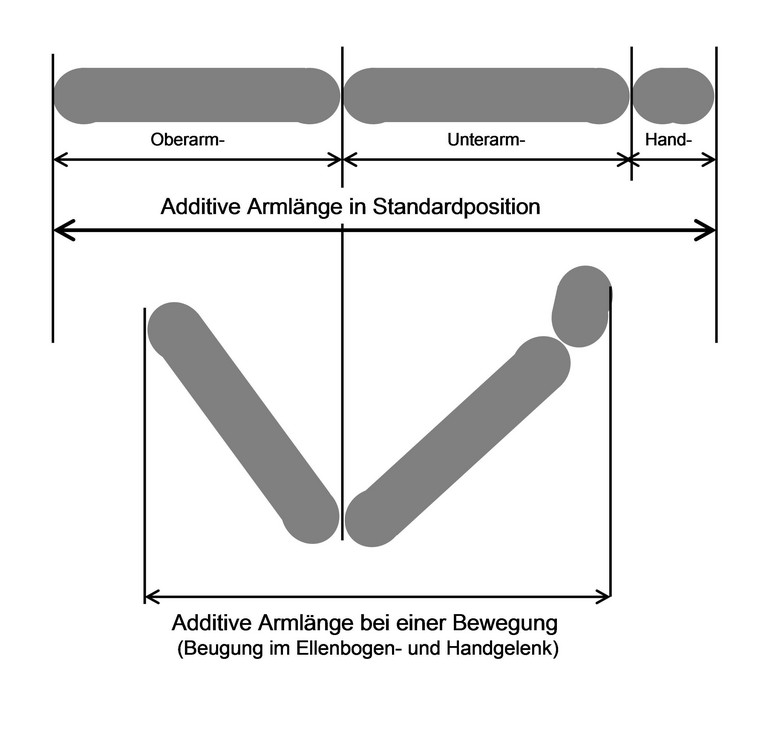Body dimensions based upon the length of individual bones continue to apply during movement of the body. When body dimensions derived from multiple bones and the associated joints (e.g. length of the entire arm including the hand) are used, the relative positions of the joints have an influence upon the dimension.
Human beings move within their anatomical constraints, and thus generally deviate from the relatively rigid measurement positions. The movement processes are highly specific to the individual. The image below shows for example the difference in space required in the horizontal and vertical direction during different variations of picking up an object.

This becomes clear in detail for dimensions on the arm. The forearm length, which corresponds anatomically to the length of the ulna, is constant irrespective of movements; by contrast, the arm length, which corresponds to the additive length of the humerus and the length of the forearm including the hand, varies according to the position of the joints (see image below).

This physiological variability caused by movement in the arm joints may for example modify, to varying degrees, the dimensions stated in DIN 33402-2 for the arm reaches, the elbow height and the height of the hand above the floor or the elbow grip length. Much the same applies to dimensions on the leg and to rotation in the trunk and neck region.
Owing to the anatomical and functional complexity of the shoulder joint, dimensions for reaches of the arms are even more difficult to predict. For such problems, use should be made of movement curves and data for movement envelopes, such as those as stated in the Anthropologischer Atlas or the Handbuch der Ergonomie.